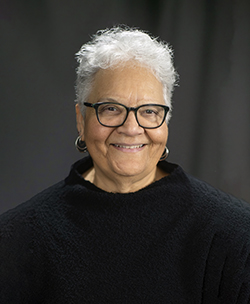
As I read about the mental health bill—Advancing and Improving Access to Mental Health (H.R. 2035/S. 870)—that the U.S Senate Finance Committee has released, it reminded me of the interface between child welfare and mental health, and of the children for whom access to mental health services has been out of reach, despite the need.
If I asked you if something broken can be fixed, your response might be, “A little super glue will fix most things.” What about broken systems? Well, that is something very different. The history of the child welfare system gives us clear indicators of its path to failure, and in turn its failure to support the children and families within the system.
In 1989, amendments to the Child Abuse Treatment and Prevention Act of 1974 created the U.S. Advisory Board on Child Abuse and Neglect. I was honored to serve on that committee, along with colleagues from various disciplines—all with a deep commitment to have a system that was child-centered and family-focused, and protected children while maintaining their cultural and community identity. The advisory board’s first report declared the state of child welfare and child protection in the United States as a national emergency. The report pointed to a system that was investigating reports but not providing resources for the children or their families.
The board considered
the child protection system “untenable” and called for its replacement with
“a new national comprehensive, child-centered, neighborhood-based child protection strategy.” While some called this report “awe-inspiring,” it did not change anything. A broken system continued. In fact, the momentum was quickly lost and the legislative amendments that occurred were merely Band-Aids. Keep in mind, this was more than 30 years ago—yet the same system persists.
How long must a child wait for a system to provide them safety and mental health resources as they move along the path to adulthood? I recently was privileged to listen to a group of Indigenous youth who are in foster care describe their spiritual truths as part of a project to connect them with their cultural roots and help them heal from childhood trauma and a shattered system that was designed to protect them. Or was it? These youth felt alone and very uncertain of their futures.
Labeling child neglect as child abuse has added to the lack of support for families in poverty and caused an overrepresentation of Native American, Alaska Native, and African American children in the system. The system has failed to recognize poverty risk in the development of child protection policies. Yet, in 2019, 40.1 million individuals (12.7% of the U.S. population) experienced poverty, according to the poverty guidelines at that time (Berkowitz, 2023). The lack of workforce diversity, combined with a lack of culturally appropriate referral sources and a lack of connectivity with the community merely highlighted the deterioration of the child welfare system.
We, as social workers, have to accept responsibility for not strongly voicing our concerns that the child welfare system was never properly structured to fulfill its public purposes or to provide culturally appropriate services. Rather, a broken system encapsulated itself to the point that its purpose became its own existence rather than the protection of marginalized children and families.
A massive overhaul of the system, even today, is too large to imagine. The child welfare system has links to law enforcement, the courts, legislative branches, mental health, public health, and public assistance. It is difficult to navigate these systems, even for someone inside them—much less a family. Coordination with these links has to be part of the process for positive, permanent change to occur. Child protection agencies have difficulty maintaining staff, especially social workers, because of the lack of flexibility in the system, the case overloads, and often poor supervision.
We cannot be part of the problem—we must be part of the solution! As social workers, we know the power positive change can have for the marginalized populations we serve. We are faced with the issues of gun violence, the reduction
of reproductive rights, the rewrite of history books to erase the horrors of slavery, and the fact that no treaty with an Indigenous nation has ever been honored.
I have been part of this system as a frontline worker, a supervisor and an administrator. Yet I still believe change is possible. Every time I hear the stories of children who are not helped but harmed by their experiences in the system, I know it has to change. Social workers need to be the agents of change, with a strong voice and our eyes on the goal. We are facing difficult times, but this is our opportunity to have the social work voice make a difference.
“Change will not come if we wait for some other person or some other time. We are the ones we’ve been waiting for. We are the change that
we seek.”
—Barack Obama
Contact Yvonne Chase at president@socialworkers.org.